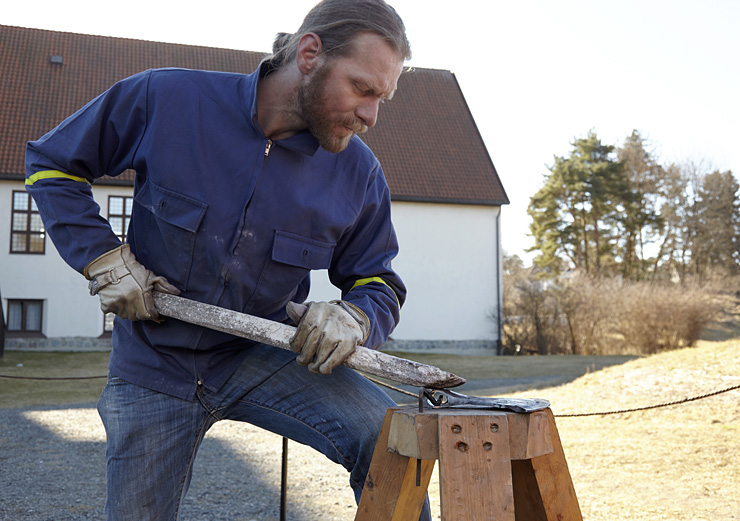Stones from the quarry
The roughly quarried and 77 cm long whetstone, or so-called sword-whetstone, was made available to us to allow the grinding and honing of the replica axe. Pål Nymoen from the Norwegian Maritime Museum was extremely helpful in facilitating this. The long whetstone is one of many from the cargo of a shipwreck near Mølen in the county of Vestfold, dated to the 11th century. Some of the whetstones were salvaged specifically for the purpose of future experimental testing. The whetstone has been identified to be from a type of slate or schist containing grains of quartz. It had been extracted at the whetstone quarry at Eidsborg.
Before we were able to put the whetstone to use, its surface had to be smoothed. One of its sides was therefore ground against a slab of rough granite. Additionally, one of its ends was honed into a slight curve. This was done to ensure that the whetstone would be able to reach down into the concave shapes of the axe. This design, with what appears to be an intentionally rounded end, can be seen in other archaeological finds of whetstones – such as C58475 from Lyngdal, and C58893/13 from grave no. 20 at Langeid. Smoothing one side of the whetstone by hand took us a couple of hours.
Grindstone wheels
Our reason for choosing the long whetstone was the lack of Scandinavian sources documenting the use of rotating sharpening stones in the Viking Age. Admittedly, there are continental illustrations (Frankish) that depict grindstone wheels in use at that time, but we opted for a tool that was indisputably documented and available in Norway.
Honing the axe
The length and coarse grain of the long whetstone made it a relatively effective grinding tool. Its long length gave a good grip, made it possible to put a lot of pressure on it, and allowed us to sharpen the blade in long strokes.
We needed to sharpen not only the cutting edge – all the other axe surfaces also needed honing. Thanks to the many facets of the project, we were running short of time. Regretfully, we had to carry out much of the rough grinding with machine tools. This time around we were therefore unable to document details such as the time required for manual whetstone grinding of the whole axe and the wear on the whetstone after use etc. The long whetstone easily gave the axe a keen edge, in preparation for the testing cutting.

































